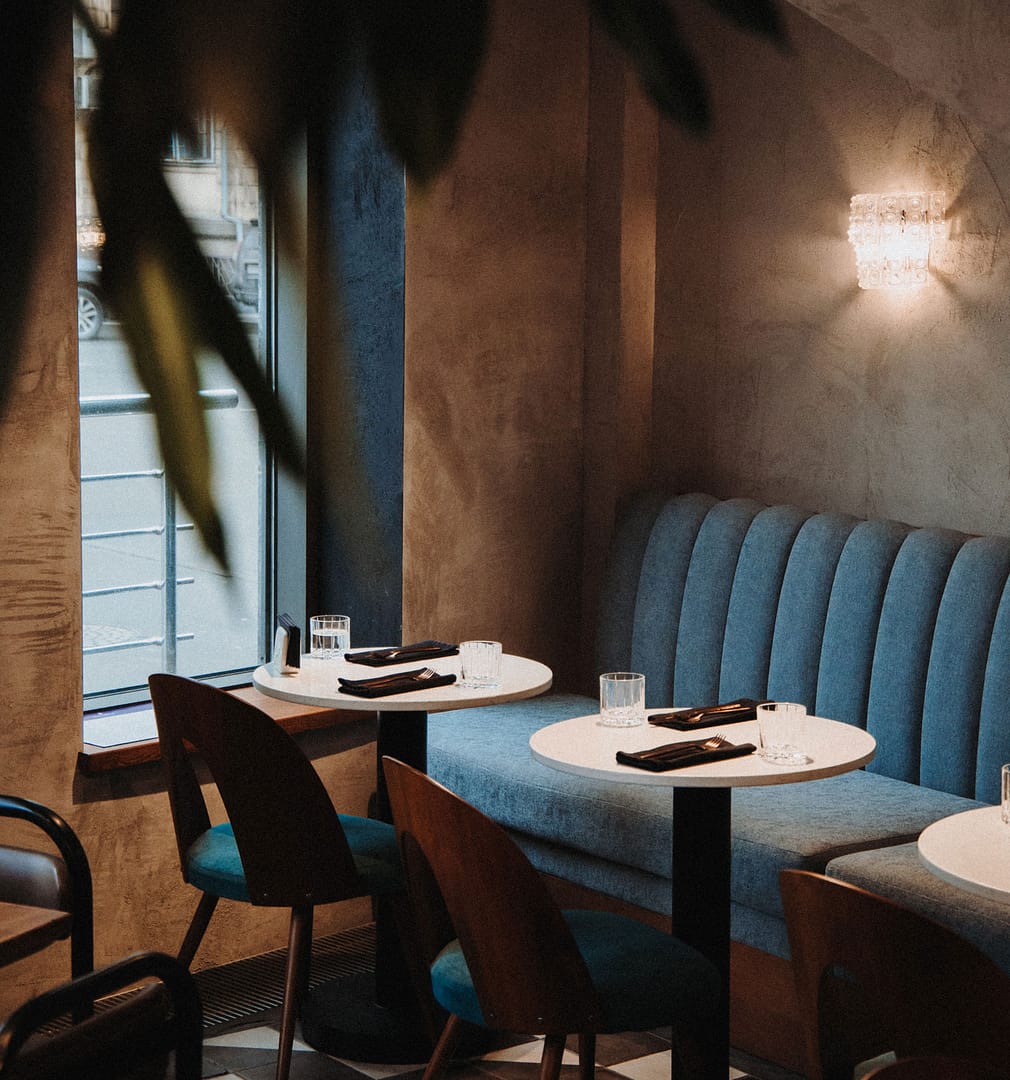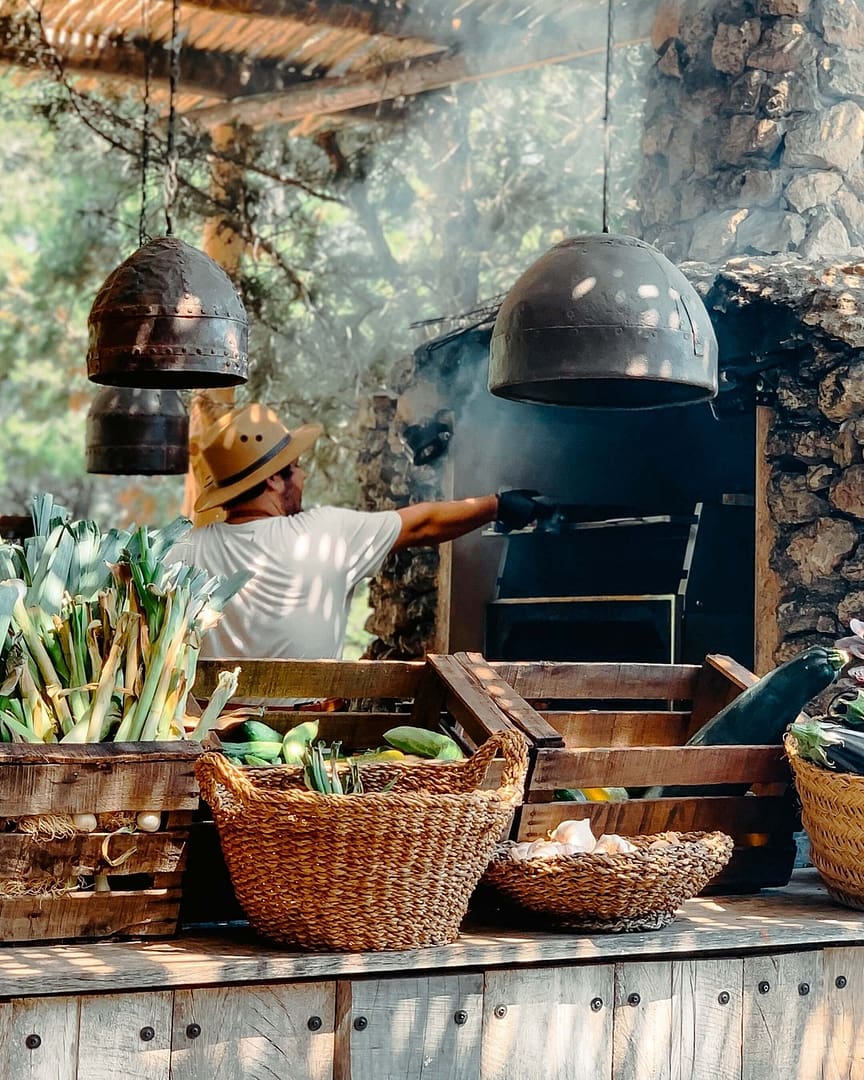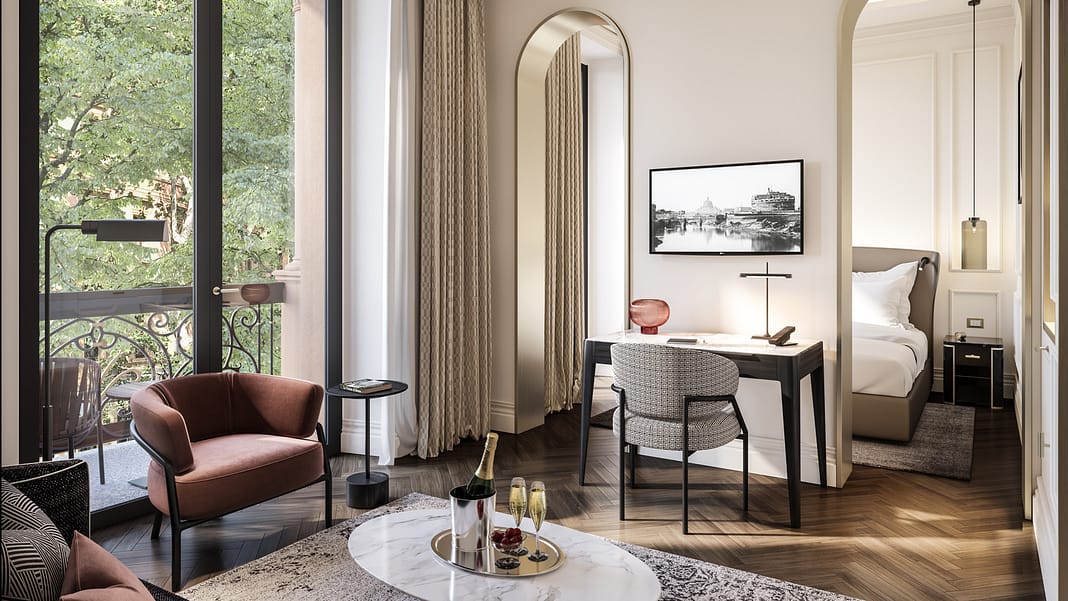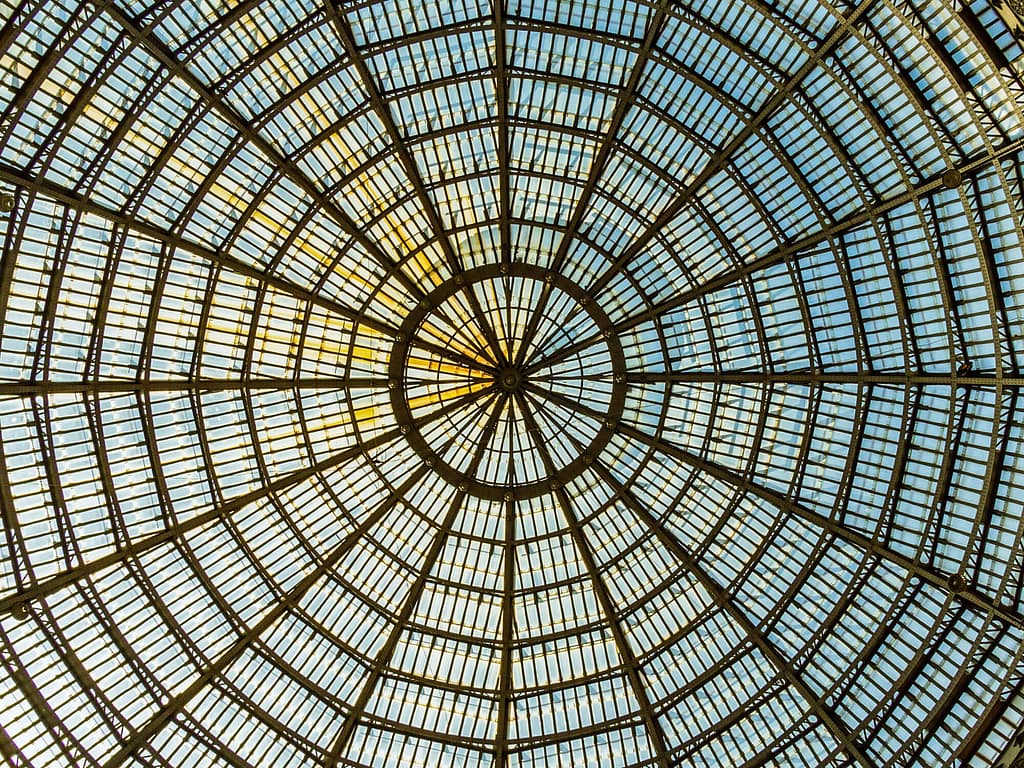Veronica Givone | Managing Director, Hospitality
&
Linda Olofsson Walsh | Designer
In recent blog posts, we have considered current trends in sustainability that impact the built environment, but perhaps no industry is feeling more pressured by consumers than the hospitality sector. As guests become more ecologically savvy, they want assurance that their stay will be as eco-friendly as possible, and their questions are compelling new approaches to the sustainability of luxury hospitality destinations.
Greenwashing Will Not Work
Greenwashing or “green sheen” occurs when an organization promotes green policies or initiatives without addressing that the organization may have a net negative impact on the environment through pollution, carbon emissions, etc. The hospitality industry is no stranger to the term largely because of the increased desirability of green destinations among consumers. “We’re absolutely seeing an increase in green-minded guests looking for opportunities to support businesses that are conscientious of the environment,” says Nichole Peterson, Associate Director of Partnerships and Guest Experience at Visit Napa Valley. “As this trend continues though, businesses are being asked more and more to prove that this is a serious commitment and more than just a green veneer being placed over the top of the existing guest experience.”
Pressure From Both Directions
With the volatility of energy prices, there is already ample justification for the hospitality sector to deploy energy-efficiency, sustainable measures to their properties. Both consumers and the corporate sector with respect to business and travel events are putting more pressure on owners and developers than ever before to become more eco-friendly.
“We’re seeing that the groups we work with are being questioned much more frequently around their sustainable operations, particularly from a corporate perspective as well. A lot of hospitality businesses are very reliant upon the corporate sector and increasingly we’re finding in those RFP documents…that they are being asked very pointed questions around how sustainable they are.” – Timothy Griffin, Principal, Wellbrook Hospitality
Clearly, consumers are pressuring the market to deliver more sustainable options, hoping they are built into the guest experience in new ways.
“Consumers just care about [sustainability] so much more right now—there’s significant evidence that GenX and millennials are seeking brands that talk about their sustainable credentials, live by them, and articulate them. And consumers are happy to spend more money on those brands. In addition, many of our clients who are more reliant on the corporate sector are seeing RFPs that request more detailed information about sustainability initiatives. It starts with the building, but they’re also asking supply chain questions, looking at plastic use on-site, cleaning supplies, sustainable materials—it’s really maturing.” – Veronica Givone, Managing Director, IA Interior Architects Hospitality Practice
Faced with these dual pressures, the hospitality industry, still rebounding from the impact of the COVID-19 pandemic, is looking at the sustainability challenge from all angles as it tries to get an edge on the competition and the market recovers.
Getting Ahead of the Sustainable Tourism Curve
The general public, increasingly aware of sustainability, is asking more specific questions when planning their stays. Griffin thinks this comes hand-in-hand with a shift in the types of questions asked of hotels and resorts. “We’re seeing that the lens is being turned to consumables such as unnecessary paper napkins and items provided in bathrooms.” He also points out that more questions than ever are being asked about how operations teams handle laundry, cleaning supplies, and more.
As these questions continue to evolve, he believes the hospitality sector will have the chance to get ahead of the curve by “going back to square one” when it comes to planning locations. He sees a future where sustainability questions asked by consumers focus on the eco-friendly nature of the built environment and its physical location. “New businesses or the large brands who are developing hotels, should ask if they need to build the hotel in a given location, and if so, if it will be a viable candidate for adaptive reuse.”
Luxury Hospitality Through the Lens of Repositioning
In certain locales, hospitality ownership may have no choice but to look at adaptive reuse and building repositioning (versus a full demolition followed by a ground-up new build) as they develop new properties. Jim Camp, Project Director and IA’s Building Repositioning Lead, views this as intrinsically positive. “Repositioning an existing location is inherently more sustainable than tearing down a site and building from scratch, and we’re seeing such sites, especially in Europe, that have so much potential to become sustainable hospitality destinations.” He points to new programs that allow building owners to update spaces with a lower carbon impact than might have been possible 10 to 20 years ago. “Europe is really leading the charge in this global movement and has a lot of programs centered around sustainability that could provide an excellent roadmap for sustainable repositioning in other markets.”
The three key elements of sustainability continue to be reduce, reuse, and recycle, and building repurposing tackles all three. Many recent projects crossing Camp’s desk aim to minimize the amount of waste created over a building’s lifespan. “We’re seeing a lot of repurposed assets that are underutilized or not in high demand, such as department stores or retail centers, being converted to hotels or mixed-use developments. This reduces the need for building demolition and the amount of waste produced in building construction.” Reusing a building and altering its functionality lessens the need for new builds, and with fewer construction materials the impact of embodied carbon is reduced. “Repositioning an existing asset will play a key role in underpinning positive and sustainable development in line with elevating ESG commitments,” Camp concludes. It is important to note that new building is not always a negative. But to limit the waste of green spaces and spaces not yet developed there is an obvious necessity to reuse and improve existing and unused heritage buildings.
Engineering a More Sustainable Luxury Hotel
There are key trends as well mitigating against the impact of climate change to consider when forecasting the future of sustainability in luxury hotel design. For example, as hotels look to curating elegant spaces for guests, opportunities arise for energy savings in guest bedrooms using smart building controls. Paul Scriven, Energy and Sustainability Director with HDR, has seen a growing demand for such systems. “There is an increasing opportunity to create systems that allow a guest’s smart device or room key to help regulate temperatures for energy savings. This is a consideration we have been responding too, thus enabling hotels to reduce energy consumption.” Building systems that incorporate guest information (keycard use, location, existing reservations, elevator demand) into forecasting models allow hospitality operators to efficiently shift energy usage between guest rooms, social, and public spaces, supporting sustainability targets and attracting guests whose first priority in property selection is its environmental impact. “I think there are a number of aspects we can implement to reduce the carbon footprint of hotels by adapting the technologies we have today and integrating these systems into the hotel experience,” notes Scriven.
Lighting and Eco-Friendly Hospitality Design
As strategies and technologies respond to meeting sustainability requirements, lighting is another significant consideration for designers and engineers in the quest to create more eco-friendly guest experiences. A major part of that effort starts with building placement and shell design. “There are a number of innovative tools that allow designers to model a building and determine its most efficient form and façade design to take advantage of existing natural lighting conditions, while making sure guests have the best view possible,” says Scriven. Especially with new builds, these tools enable designers and architects to have the ability to significantly reduce the demand on lighting systems and provide more potential for elements such as color palette, finishes, and materiality to play a role in managing the natural and artificial lighting environment of a space.
“Knowing the lighting environment of a building aids us in space planning—allowing us to work around the natural light to plan where certain functions or space types need to exist to arrive at the most sustainable solutions when it comes to lighting requirements.”
Looking Towards Renewable Energy
Since hotels have such large energy demands, these complex buildings are perfectly primed to set an example for optimizing systems for renewable energy use. Scriven says, “The traditional mechanical and engineering system of using gas boilers or combined heat and power (CHP) will typically be replaced through comprehensive refurbishment, and there are a number of technologies we have been exploring to enable hotels to become increasingly more sustainable.” Scriven references the potential use of future hydrogen in the UK, all-electric systems, waste water and general heat recovery, and geothermal systems when driving home the point that “Hotels present a significant opportunity to embrace new technologies to help reduce energy consumption. There is a tremendous prospect to follow the lead of other building types such as data centers, which in certain climate zones are using all-air adiabatic systems and achieving considerable carbon savings—upwards of 70-80% in some cases, as well as residential dwellings that are starting to integrate waste water heat recovery.”
Improved Air Quality = Improved Circulation
As cities around the world look to promote clean air technologies, for example the use of electric vehicles and the mitigation of fossil fuels, the opportunity for buildings to make better use of cleaner, greener, natural air environments will typically increase. As a final note, Paul Scriven adds, “With the use of cleaner technologies, this should also lead to a reduction in air quality concerns and reduced noise on the streets. For hotels located in dense urban areas, creating an oasis of calm for their guests while achieving energy savings is a balance that most operators are seeking to achieve.”
Materiality in Creating a Luxury, Sustainable Experience for Guests
Building owners are well aware that the luxury sustainability experience sought by their future guests will have to rely on more than cutting emissions and reducing the use of plastics. “These guests are seeking the true luxury hospitality experience,” remarks Veronica Givone. “Part of the design challenge is enabling [the user] to see and feel that the space is both luxurious and sustainable, while achieving a carbon-zero outcome.” Givone points out that local resources play a significant role in accomplishing this. “We like to rely on local artisans, resources, and suppliers for as much of the FF&E (furniture, fixture and equipment) and materials as possible so that we can reduce the emissions cost associated with transporting materials from other parts of the world. This also gives us an opportunity to include true local flavor, culture, and history into the project.”
Mud, Mushrooms, and Algae for a Luxury Experience
At the heart of the travel industry is the luxury hotel or resort, providing an uncommon experience for some and a level of comfort aligned with lifestyle for others. Add to that a new factor, the demand for sustainability that is gaining traction with travelers worldwide. Can luxury hotels meet sustainable objectives? What is sustainable luxury?
Sustainable Materials as a Status Symbol
We spoke with Sarah Kenyon of the KLC School of Design to see how the next generation of designers might look to create sustainable experiences via materiality. “When you are a designer, it feels like your wings have been clipped when you’re told to design using sustainable materials,” explains Kenyon, “but we’re finding new options that allow us to sexy-up sustainability.” Kenyon points out that many sustainable products on the market are not new but that vendors/producers are finding new ways to improve them to make them more appealing to designers. “All natural dyes are definitely a huge trend for wall coverings and fabrics, and [materials suppliers] are finding creative ways to make these sustainable materials status symbols.” She feels that marketing and brand partnerships could play an enormous role in increasing the usage of these materials. “Producers are finding ways to make their materials feel more sparkly and sexy—and that, in the simplest terms, is what this type of luxury is all about.”
New Sustainability Approaches in Materiality
While Kenyon does not believe there is an inherent lack of sustainable materials available for designers, she does see a few recent technological achievements helping to make the use of healthy materials more widespread. “The 3D printing of organic materials has the potential to bridge the gap here. It’s similar to existing materials we’re using, but it offers the designer complete control of how it’s being used—perhaps that’s one way we open up the avenues.” She goes on to discuss the viability of 3D-printed mud and a host of other products rooted in recent technological innovations that have the potential to move sustainable materials forward, discussed by IA’s Hospitality studio during a recent blog post.
As noted in several blog posts and a recent whitepaper, IA continues to look towards a variety of carbon-sequestering biomaterials (including bamboo and timber) and concrete alternatives that offer practical alternatives to traditional building materials.
Conclusion
Curating a sustainable, luxury-hotel guest experience goes well beyond the built environment and should impact everything from communications, marketing, and branding to employee training and operations. That said, all signs point to consumers asking more educated, detailed questions in the future. The industry is already fielding an increase in questions focused on the built environment and its impact on the environment. In general, a project’s sustainability outlook is determined at the beginning of the planning stages. Defining the right objectives and partnerships at the start can ensure that all participants, processes, and materials are aligned in keeping with sustainable goals to achieve the best outcomes for luxury hotels and the planet.





